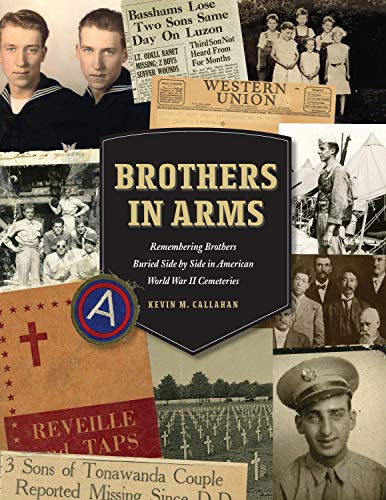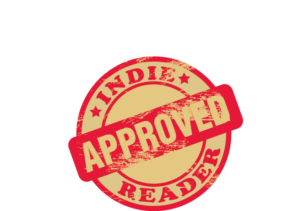Brothers in Arms: Remembering Brothers Buried Side by Side in American World War II Cemeteries received a 4+ star review, making it an IndieReader Approved title.
Following find an interview with author Kevin Callahan.
What is the name of the book and when was it published?
Brothers in Arms: Remembering Brothers Buried Side by Side in American World War II Cemeteries. Published on July 4, 2020.
What’s the book’s first line?
The first words are not my own but those of President Abraham Lincoln, “Four score and seven years ago…”
What’s the book about? Give us the “pitch”.
The book is about brothers who died in World War II and who are buried today, side by side, in an American military cemetery overseas. The book takes the reader on a visual and narrative journey of World War II, of America in the first half of the 20th century, and of these serene resting places, all through the stories of these heroic brothers.
What inspired you to write the book? A particular person? An event?
Ten years ago, I visited the Sicily-Rome American Cemetery with my wife and three young sons. Walking through the gravestones, we came across two brothers from Iowa buried side by side. As the father of three boys, I found the image of the two brothers resting forever together to be especially poignant, and it inspired me to find and tell the stories of all these brothers.
What’s the main reason someone should really read this book?
I think the book personalizes and humanizes the war in a whole new way. We learn the stories of everyday Americans, from all over the country, from all sorts of backgrounds, and often from the family members who lost these brave brothers and still live with the pain of that loss 75 years later. Also, the book includes over 700 original photographs and other historic artifacts, putting a face and a story to those names carved in white marble.
If they made your book into a movie, who would you like to see play the main character(s)?
The book profiles 72 sets of brothers, “Citizens of Every Calling” as an inscription at the Epinal American Cemetery reads, and so I think it would be best if no-name actors represented these heroic service members in any film adaptation.
When did you first decide to become an author?
I’ve loved writing since being a history major in college and writing for the college newspaper. I started my career as a journalist but then got “sidetracked” for 20 years before returning to what I love the most, which is history and writing.
Is this the first book you’ve written?
I have written other books about business management and also several corporate histories, but this is my first work of general nonfiction.
What do you do for work when you’re not writing?
I write corporate or personal histories for hire and also produce podcasts and other historical content for companies, families, and non-profits.
How much time do you generally spend on your writing?
Probably not enough…but I have been lucky to find great editors.
What’s the best and the hardest part of being an indie?
The best part, by far, is being able to completely control the editorial content and quality of your book. I was very lucky to find an incredibly talented designer named Jerry Takigawa, and I’m not sure if the book could have been completed in the same way by a large, traditional publisher. The hardest part is navigating the world of distribution and promotion to get your book widely available to the public, especially more challenging during Covid-19. We were fortunate to have great support online and from Indie bookstores, and the book has recently been picked up by Target Stores for distribution nationwide.
What’s a great piece of advice that you can share with fellow indie authors?
Write a book that you’re passionate about and don’t let anything stand in your way from getting it published and into the hands of readers.
Would you go traditional if a publisher came calling? If so, why?
I would, as long as they could commit to the same quality of design and production as our first book. I spend a lot of time on distribution and promotion and so working with an outside publisher would allow me to focus solely on the editorial component.
Is there something in particular that motivates you (fame? fortune?)
I’m motivated to tell the stories of everyday people that history has largely forgotten.
Which writer, living or dead, do you most admire?
Rick Atkinson and Ian Toll are modern masters of the World War II non-fiction genre, following in the proud tradition of Cornelius Ryan. Atkinson’s trilogy of the war in Europe and Toll’s recently completed trilogy of the war in the Pacific are both incredible contributions to the canon of the history of the Second World War. For a global view of the entire war, there is no better than Antony Beevor.
Which book do you wish you could have written?
A Bridge Too Far by Cornelius Ryan, as he was able to interview so many living soldiers at the time and capture first-person narrative of the experience of battle.

